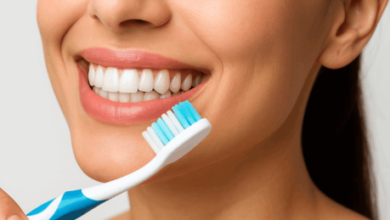Understanding Palatal Expanders: Your Guide to a Wider Smile

What Are Palatal Expanders?
Defining Palatal Expanders
Palatal expanders are orthodontic devices used to widen the upper jaw (maxilla). Think of them as tools that gently encourage the bones in your palate to separate slightly. This creates more space in your mouth, which can alleviate crowding and other dental issues. They’re most commonly used in children and adolescents because their palates are still developing and more easily influenced. However, adults can also benefit from expanders, sometimes in conjunction with surgical orthodontics.
How Palatal Expanders Work
To understand how these devices work, it helps to know a little about the anatomy of your mouth. The upper jaw isn’t a single bone; it’s actually two halves connected by a suture in the middle of the palate. A palatal expander applies gentle pressure to this suture, gradually pushing the two halves apart. This process stimulates bone growth in the gap, effectively widening the jaw. It’s a slow and steady process, usually taking several months to achieve the desired results.
The Role of Palatal Expanders in Orthodontics
Palatal expanders play a significant role in comprehensive orthodontic treatment. They’re often used as a first step to create space for teeth to align properly. By widening the upper jaw, expanders can:
- Correct crossbites (where the upper teeth fit inside the lower teeth).
- Alleviate crowding, reducing the need for tooth extractions.
- Improve breathing by opening up the nasal passages.
- Create a more balanced and aesthetically pleasing smile.
Palatal expanders are not a one-size-fits-all solution. The decision to use one depends on a thorough evaluation by an orthodontist, considering the patient’s age, the severity of the problem, and overall dental health. They are often used in conjunction with braces to achieve optimal results.
Why Your Child Might Need Palatal Expanders
Palatal expanders are often recommended for kids and teens who are still growing. It’s easier to guide jaw and facial development during this time. Using a palatal expander can lead to big improvements, like a wider smile, without needing tooth extractions or jaw surgery later on. But why exactly might your child need one?
Addressing Crossbites with Palatal Expanders
One common reason is to fix a crossbite. A crossbite happens when the upper back teeth bite inside the lower teeth. This means the upper jaw is too narrow compared to the lower jaw. A palatal expander widens the upper jaw, so the teeth align correctly. Think of it like realigning puzzle pieces that don’t quite fit together. If left untreated, crossbites can lead to uneven wear on the teeth, jaw pain, and even problems with speech.
Correcting Crowding Issues
Another big reason is to create space for crowded teeth. Sometimes, even before all of a child’s permanent teeth have come in, it’s clear there won’t be enough room. Expanding the upper jaw can make space for the teeth to erupt properly, potentially avoiding the need to remove permanent teeth later on. It’s like planting seeds in a garden – you need enough space for them to grow without being cramped. If you don’t address crowding, it can lead to impacted teeth, difficulty cleaning, and an increased risk of cavities.
Preventing Future Orthodontic Problems
Using a palatal expander early can prevent more serious orthodontic problems down the road. By widening the upper jaw, it can improve breathing and nasal airway function, reduce the likelihood of impacted teeth, and create a more balanced facial appearance. It’s like investing in preventative maintenance for your car – addressing small issues now can prevent bigger, more expensive repairs later. If you’re concerned about your child’s dental development, it’s always a good idea to consult with an orthodontist. If you have a dental emergency, you may need to contact an emergency orthodontist.
Types of Palatal Expanders
So, you’re probably wondering what kind of palatal expander might end up in your mouth, or more likely, your kid’s mouth. There are a few different types, and the orthodontist in Vernon CT will pick the one that’s best for the specific situation. It’s not a one-size-fits-all kind of deal.
Removable Palatal Expanders
Think of these like retainers, but with a purpose. Removable palatal expanders are generally used for cases where only a small amount of expansion is needed. They’re great because you can take them out to eat and clean your teeth, which is a definite plus. However, that also means they require a lot of discipline to wear them as prescribed, usually around 22 hours a day. If you don’t wear them enough, they won’t work, and you’ll be back to square one.
Rapid Palatal Expanders
These are the heavy-duty expanders. They’re fixed in place, usually with bands that go around the molars. There’s a screw in the middle that you (or your kid) will need to turn with a special key. This turning action gradually widens the palate. It might sound scary, but it’s usually not too bad. The key thing is to follow the orthodontist’s instructions exactly.
Surgically Assisted Rapid Palatal Expanders (SARPE)
Okay, this is where things get a bit more intense. SARPE is usually reserved for adults whose palatal suture has fully fused. Because the bone is fused, simply turning a screw won’t cut it. SARPE involves a surgical procedure to loosen the suture, allowing the expander to do its job. It’s a bigger deal than the other types, but sometimes it’s the only option for adults who need significant expansion.
SARPE is a more invasive procedure, but it can be highly effective for adults who need substantial palatal expansion. The surgery helps to overcome the resistance of the fused palatal suture, allowing for greater and more predictable results.
Implant-Supported Palatal Expanders
These expanders use small implants placed in the palate to provide anchorage. This can be a good option for people who don’t have enough teeth to support a traditional expander, or when more force is needed. The implants provide a stable base for the expander to push against, leading to more effective expansion. They’re not as common as the other types, but they can be a lifesaver in certain situations.
The Palatal Expander Treatment Process
Initial Assessment and Planning
So, you’re thinking about a palatal expander? The first step is always a thorough assessment by an orthodontist. They’ll take a look at your (or your child’s) teeth and jaw, probably using X-rays and impressions. This helps them figure out if a palatal expander is really the right solution and what type would work best. They’re looking at the whole dentofacial picture, not just the teeth.
- Detailed examination of teeth and jaw structure.
- X-rays to assess bone structure and tooth roots.
- Impressions to create a model of the mouth.
The initial consultation is super important. It’s your chance to ask all your questions and understand the orthodontist’s plan. Don’t be afraid to speak up about any concerns you have!
Adjusting Your Palatal Expander
Once the expander is in place, you’ll need to adjust it regularly. Usually, this involves turning a small screw in the center of the expander with a special key. The orthodontist will show you exactly how to do this, and it’s usually something you can do at home. It might feel a little weird at first, but you’ll get the hang of it.
Here’s a basic idea of how it works:
- Insert the key into the designated hole.
- Gently push the key towards the back of the mouth until you see the next hole appear.
- Remove the key.
Expected Treatment Duration
How long will you have to wear the expander? It varies. It depends on how much widening is needed and how quickly your mouth responds. Typically, it’s several months. But even after the desired width is achieved, the expander might stay in place for a while longer to stabilize the results. Think of it like this:
- Active expansion phase: Several weeks to months.
- Retention phase: Several months to allow bone to fill in the gap.
- Total treatment time: Varies, but often 6-12 months overall.
| Phase | Duration | Purpose |
| Active | 2-6 months | Widening the palate |
| Retention | 3-6 months | Stabilizing the expansion and bone growth |
| Overall | 6-12+ months | Achieving long-term results |
Living with Palatal Expanders
Alright, so you’ve got your palatal expanders in. Now what? It’s not like you can just forget about them. There’s a bit of adjusting to do, but it’s all manageable. Think of it as a temporary inconvenience for a long-term gain. Here’s the lowdown on making life with expanders a little easier.
Managing Discomfort and Pain
Let’s be real, there’s going to be some discomfort. It’s usually just a feeling of pressure, especially right after you turn the key. It might even feel a little weird in your nose or around your eyes. But don’t freak out, it’s normal and it doesn’t last long. Over-the-counter pain relievers can help if it’s really bothering you. Most people find that the discomfort fades pretty quickly as they get used to the expanders.
Maintaining Oral Hygiene with Palatal Expanders
Keeping your mouth clean is super important, even more so now. Food can get trapped in and around the expander, which can lead to problems like swollen gums and bad breath. So, brushing and flossing are your new best friends.
Here’s the deal:
- Brush after every meal. Seriously, every single one.
- Floss at least once a day, paying extra attention to the areas around the expander.
- Use a mouth rinse to get into all those hard-to-reach spots.
Seriously, don’t slack on the cleaning. It’s way easier to prevent problems than to deal with them later. Swollen gums are no fun, and nobody wants bad breath.
Dietary Considerations with Palatal Expanders
Eating is going to be a little different for a while. You’ll want to avoid foods that are super sticky, chewy, or hard. Think caramels, hard candies, and tough meats. These can damage the expander or get stuck in it, which is just annoying. Also, be careful with things like nuts and seeds that can create small particles that get lodged in the appliance.
Here’s a quick list of foods to be cautious with:
- Chewy candies (caramels, taffy)
- Hard candies (lollipops, jawbreakers)
- Sticky foods (gummy bears, chewing gum)
- Hard foods (nuts, ice)
Soft foods are your friend right now. Think mashed potatoes, yogurt, soup, and pasta. You’ll get the hang of it pretty quickly, and you’ll figure out what you can and can’t eat without any issues. Just be patient and take it slow at first. You’ll be back to your normal diet before you know it.
Benefits of Palatal Expanders
Palatal expanders offer a range of advantages, especially when used during a child’s developmental years. They can address existing dental problems and even prevent future ones. Let’s take a look at some of the key benefits.
Achieving a Wider, More Balanced Smile
One of the most noticeable benefits of a palatal expander is the creation of a wider and more balanced smile. When the upper jaw is too narrow, it can cause the teeth to appear crowded or misaligned. By widening the palate, the expander creates more space for the teeth to align properly, resulting in a more aesthetically pleasing smile. This can have a big impact on a person’s confidence and self-esteem.
Improving Breathing and Nasal Airway
A narrow upper jaw can sometimes restrict the nasal passages, leading to breathing difficulties. Expanding the palate can widen these passages, making it easier to breathe through the nose. This is especially helpful for children who tend to breathe through their mouths, which can lead to other health problems. Improved nasal breathing can also contribute to better sleep quality.
Reducing the Need for Tooth Extractions
When there isn’t enough room in the jaw for all the teeth to erupt properly, orthodontists sometimes recommend tooth extractions to create space. However, using a palatal expander can often eliminate the need for extractions. By widening the jaw, the expander creates the necessary space for all the teeth to fit comfortably, avoiding the trauma and potential complications of tooth removal.
Palatal expanders can be a great way to avoid more invasive procedures later on. By addressing jaw size issues early, you can set the stage for a healthier and more functional bite for years to come. It’s not just about looks; it’s about long-term oral health.
Potential Side Effects and Considerations
Okay, so palatal expanders are pretty cool for fixing smiles, but let’s be real, it’s not all sunshine and rainbows. There are a few things you might run into during the process. It’s good to know what to expect so you’re not totally caught off guard.
Temporary Discomfort and Speech Changes
Yeah, it’s probably gonna feel weird at first. Think about it, you’re literally widening your jaw. Some people get a little discomfort or even a headache. Also, don’t be surprised if you sound a bit funny for a little while. A slight lisp is pretty common as your tongue gets used to the expander being there. It usually goes away after a week or two, so hang in there!
Addressing Gaps Between Front Teeth
One thing that can happen is that a gap might show up between your front teeth. It’s kind of like the expander is doing its job too well. But don’t freak out! This is totally normal.
The gap is actually a sign that the expander is working and creating space. Your orthodontist will usually close this gap later on with braces or other treatments. So, it’s all part of the plan!
Importance of Consistent Cleaning
Seriously, keep that thing clean! Food can get stuck in the expander, and nobody wants a party of bacteria hanging out in their mouth. Here’s a quick checklist:
- Brush your teeth (and the expander) after every meal.
- Use a water flosser to get into those hard-to-reach spots.
- Consider a mouth rinse to keep things fresh.
If you don’t clean it well, you might end up with bad breath or even some gum problems. So, make cleaning a priority!
Alternatives to Palatal Expanders
Sometimes, a palatal expander isn’t the only way to go. It really depends on the specific situation and what your orthodontist, maybe even one in Vernon, CT, thinks is best. There are other options that might work, especially if the problem isn’t too severe or if you’re an adult where bone growth is already complete.
Traditional Braces as an Alternative
Braces aren’t just for straightening teeth; they can also help with some of the issues that palatal expanders address, like crowding and crossbites. Braces can be used to gradually shift teeth into better alignment, creating more space in the mouth. It might take longer than using an expander, but it’s often a viable option, especially for older teens and adults. Braces are a good option if the expansion needed is minimal and the main goal is to straighten teeth.
Considering Tooth Removal
In some cases, overcrowding is so severe that the best way to create space is to remove one or more teeth. This is usually a last resort, but it can be effective. The teeth most often removed are premolars. After the extraction, braces are used to close the gaps and align the remaining teeth. This approach is more common when the crowding is significant and expansion alone won’t solve the problem.
Jaw Surgery for Severe Cases
For adults with significant skeletal discrepancies, jaw surgery (orthognathic surgery) might be the only way to achieve the desired results. This is a more invasive option, but it can correct severe crossbites and other jaw misalignments that can’t be fixed with braces or expanders alone. The surgery involves repositioning the upper or lower jaw, or both, to improve the bite and facial aesthetics. Recovery can be lengthy, but the results can be dramatic.
It’s important to discuss all the options with your orthodontist to determine the best course of treatment for your specific needs. Each case is unique, and the right approach will depend on the severity of the problem, your age, and your overall health.
Wrapping Things Up
So, palatal expanders might seem like a big deal, but they really help make smiles wider and healthier. They create space in the upper jaw, which can mean straighter teeth and maybe even avoid bigger dental work later on. It’s true, getting used to an expander takes a little time. You might feel some pressure or have trouble talking at first. But when you look at the long-term good, like a better smile and easier breathing, it’s definitely worth it. It’s all about getting to a healthier, more confident you.




